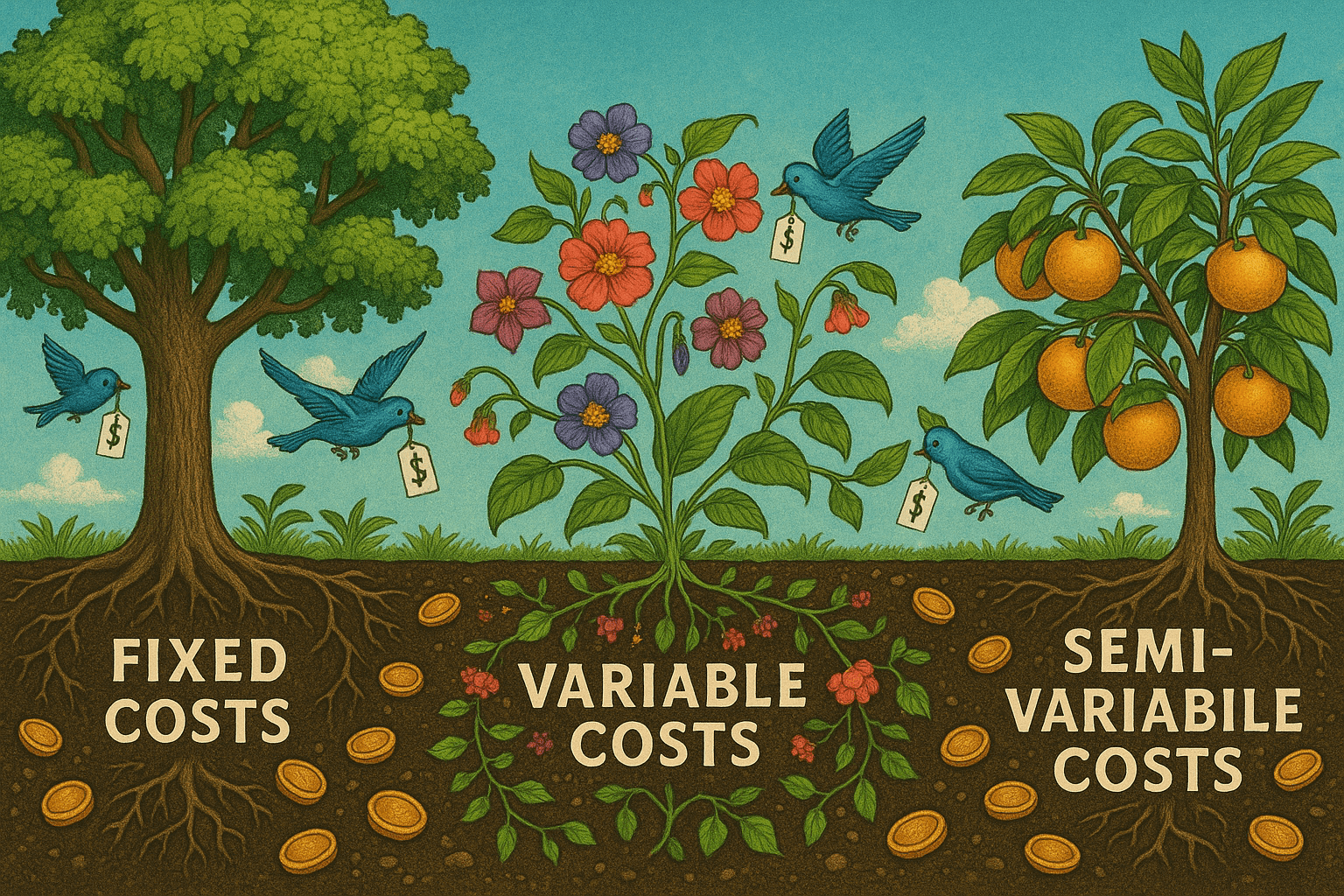What to look for in small business budgeting tools 🔍
If you’re running a small business and managing the numbers without a dedicated finance person, the right budgeting tool can make your financial planning straightforward and reliable. With so many options available, the key is knowing what features will actually support your day-to-day operations and decision-making.
The best tools help you do three things well: understand where your money is going, spot red flags early, and make confident decisions about the future. That doesn’t require a full ERP system or expensive forecasting software. It means finding a tool that matches how you actually operate: daily sales, seasonal shifts, fluctuating inventory, and unexpected repairs that come at the worst time.
For small business owners, budgeting tools need to feel intuitive. You shouldn’t need to learn finance-speak just to input your numbers. Look for tools with category-level clarity (so you can separate rent from marketing or payroll from supplies), month-by-month projections, and a way to update numbers quickly without having to rebuild the whole spreadsheet.
For Canadian businesses specifically, prioritize tools that handle HST/GST calculations automatically, integrate with Canadian payroll requirements, and accommodate provincial tax variations. You’ll also want a cash flow visualization that shows not just what you expect to earn, but when payments hit your account. Many Canadian businesses operate with net-30 payment terms, making timing visibility crucial for cash management.

Free vs. paid platforms: What really makes a difference 💡
Most small business owners start with a Google Sheet or Excel file, and that’s perfectly fine. Free tools like spreadsheets give you full control and no cost barrier, which is why they’re still the most common starting point for budgeting. With the right template, a spreadsheet can go a long way, especially if you only have a few expense categories and a simple revenue model.
But as your business grows, the cracks start to show. You might find yourself constantly fixing broken formulas, copy-pasting from your accounting software, or losing track of which version is most up to date. That’s when it’s worth asking: is it time to invest in something built for this?
Paid platforms like QuickBooks Online and Xero can integrate directly with your books, automate categorization, and generate real-time budget vs. actual reports. For Canadian small businesses, these platforms excel at handling HST/GST remittances, CRA payroll deductions, and T4 preparation, reducing tax compliance stress while keeping your budget aligned with actual obligations. QuickBooks, for instance, automatically calculates Canadian tax rates by province and generates the reports you need for year-end filing. So, what’s the trade off? Free tools offer flexibility, while paid platforms provide reliability, automation, and peace of mind regarding compliance. If you’re spending more than a few hours a month fiddling with formulas or manually updating numbers, you’re probably ready to level up. Many small business owners we work with through EIM’s accounting services find that the time savings alone justify the cost.

How to automate updates and flag deviations in real time ⚙️
Keeping your budget current can be challenging when business realities shift throughout the year. You start with a solid plan, but then circumstances change: a client extends their payment timeline, supplier costs increase, or you need to make an unexpected equipment purchase. When your budget no longer reflects your current situation, it becomes less useful for decision-making.
That’s where automation comes in.
Modern budgeting tools let you sync your actuals from your accounting software to your budget template. Instead of manually entering every receipt or invoice, you can track variances automatically. Some platforms even let you set up alerts when spending in a category exceeds your target. Imagine getting a heads-up when your marketing costs go 15% over budget, before the month ends.
This doesn’t have to be complex. Even Google Sheets can be connected to tools like QuickBooks Online using third-party connectors like Zapier or Google Data Connector. At EIM, we help clients build live dashboards that compare budget vs. actual monthly through our cloud accounting solutions, so they can make quick decisions without waiting for end-of-quarter reports.
For Canadian businesses, automated systems are particularly valuable for tracking changing tax obligations. When CRA rates adjust or provincial regulations shift, integrated tools update automatically rather than requiring manual calculation adjustments. The goal isn’t to make your budget a rigid rulebook. It’s to give you real-time clarity, so you can adjust when reality shifts, because it always will.

Tool fatigue: When to consolidate instead of adding more 🪘
As your business grows, it’s easy to collect a stack of tools: one for invoicing, another for budgeting, one for time tracking, one for inventory, and maybe a project management tool on top. Each tool promises to solve a problem, but too many of them create a new one: tool fatigue.
You know you’ve hit this point when your team spends more time toggling between systems than running the business. Or when you’re duplicating data across platforms because nothing talks to each other.
When it comes to budgeting, consolidation beats expansion. Look for tools that integrate budgeting with accounting, invoicing, and payroll. That way, you only enter information once, and you can see the full financial picture without chasing numbers across multiple platforms.
For example, QuickBooks lets you budget, reconcile bank transactions, and run Canadian payroll in one place. Paired with a tool like Dext for expense tracking, you can streamline your entire financial workflow without adding unnecessary complexity. This integrated approach is exactly what we implement through our bookkeeping services, one unified system that handles everything from daily transactions to annual budget tracking.
If you feel overwhelmed by tools, it might be time for a budget tech audit. What’s giving you real insight? What’s just adding noise? At EIM, we often help small business owners simplify their systems by consolidating their financial tools into integrated workflows, so they can spend less time maintaining software and more time making strategic decisions.
The beauty of consolidation is that your budget becomes part of your daily operations rather than a separate monthly chore. When your sales data is integrated directly into budget tracking, variance analysis occurs automatically, eliminating the need for manual updates.
Related Reading 📖 Explore the full budgeting framework in the pillar article: EIM on Creating Your First Annual Business Budget: A Guide for Small Business Owners
Co-founder & Creator of Possibilities
Serving the startup community since 2018



